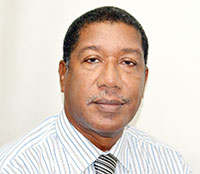A PATIENT visited me with a very sad story. She had been diagnosed with cancer. And why did she come to tell me that? According to her, she first became aware of her condition after reading one of my articles. She asked me to rewrite the essentials of that article because of its magnitude.
No doubt, most people do not know that they can conduct a self-examination of their mouth with reasonable proficiency aimed at detecting abnormalities of disease, including oral cancer. I will proceed to give step-by-step instructions on how this may be done.
1. Stand before a mirror and look at your face and neck. With your left hand, feel the right side of the neck and the area under your jaw. Repeat for the left side of your neck, using your right hand. Do both sides appear and feel the same? Firm lumps (lymph nodes) located in regions of the neck and below the jaws could indicate disease of the oral cavity.
2. Inspect your lips by first looking at and feeling the outside. Pull the lower lip down using the thumb and forefinger, then feel the inside and outside of your lip. Repeat the same for the upper lip. Do you see any colour changes? Do you feel any lumps?
3. Examine the gums with the lip pulled away. Remember to observe and touch all areas of the gums by using the forefinger. Does everything look the same as last month?
4. With the thumb and forefinger at the corner of the mouth, draw the cheek away from the teeth. Keeping the mouth slightly closed, look at and feel the cheek with the fingers. Repeat for the other cheek. Do you see any changes?
5. Stick the tongue and grasp the end with a handkerchief. Look at and touch the top surface. Pull the tongue to the right and then to the left. Observe and touch each side. Do you see any lumps or sores or growths on the tongue?
6. Next, touch the tip of your tongue to the back of the roof of your mouth and look at the floor of the mouth and the underside of the tongue. Feel this area in the same manner as before, using the forefinger. Do you notice any differences?
7. Say “ah” to see the very back of your mouth (throat). You may need a good source of light to be able to view the tonsil area. Tilt your head slightly backwards to see the roof of the mouth. Do you see any scaly patches?
Periodic examinations of the mouth should be done to detect early signs of disease and can reduce the risk of allowing a serious problem to develop. One would not be in the position to notice a change of colour, texture, size, shape, or function unless one regularly inspects the related tissues and organs. Get into the habit of checking out the mouth every day.
You must be able to know when something unusual occurs within a day of its evolution. The key to effective treatment of any disease depends heavily on how early the condition was discovered and how soon treatment is instituted.
Every normal person above the age of 10 should take personal responsibility for ensuring that any abnormal change occurring in any part of their body is investigated by a competent professional.
This is even more important for individuals who indulge in harmful activities such as smoking. It is well established that over fifty of the most common diseases have oral signs and symptoms as part of their pathology. Often, these signs and symptoms are among the visible manifestations of the disease. One notable example is AIDS.
The dentist is therefore in a position to notice the commencement of many ailments, sometimes even before it becomes full-blown. Fortunately, you can be one to discover a serious condition by yourself before seeking help from qualified personnel.



.jpg)








